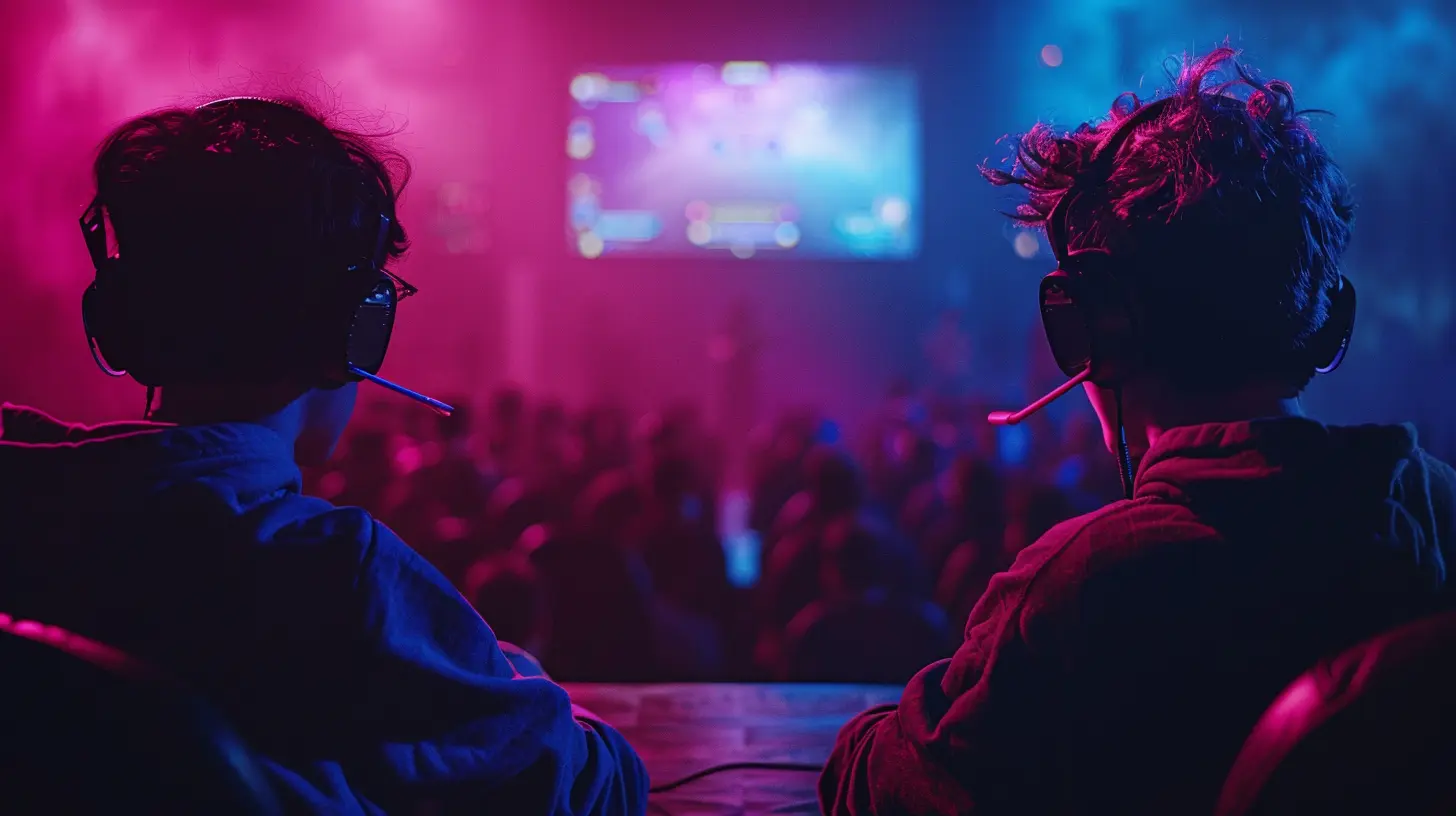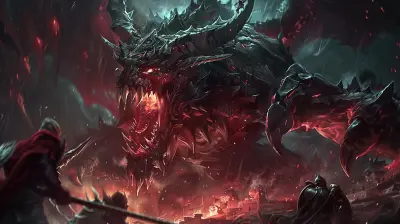Watching vs Playing: Why Tournament Viewership is Growing
29 August 2025
Gaming has become a global phenomenon. But something interesting is happening—more people are watching games than playing them. Sounds crazy, right? But it’s true. From esports arenas packed with screaming fans to millions of viewers tuning in on Twitch and YouTube, tournament viewership is absolutely booming. So, what’s behind this big shift? Why are so many gamers choosing to watch instead of play?
Let’s dig deep into this growing trend and figure out what’s really going on behind those booming screens.
A New Era of Gaming: Spectatorship is In
Gaming used to be a solo or group activity—you’d sit in your room with your console or hop into a game lobby with friends. The point? You wanted to play. Fast forward to now, and suddenly, people are glued to Twitch streams and live esports tournaments. Crazy amounts of money, energy, and time are going into watching rather than playing.Why? It's not because games got less fun. It's because watching became an experience of its own—sometimes just as thrilling as playing, or even more.
The Rise of Streaming Platforms
Let’s face it—Twitch, YouTube Gaming, and even Facebook Gaming changed the game (pun intended). These platforms turned casual players into full-blown entertainers. It’s like the Netflix of the gaming world, but the actors are everyday people with massive personalities and top-tier skills.Ever found yourself watching someone play for hours? You're not alone. Viewers enjoy:
- Personality-driven content – Streamers bring energy, jokes, and their own flavor to the gameplay.
- Skill showcase – Watching high-level gameplay is like watching Michael Jordan play basketball. You might not dunk like him, but it’s fun as heck to watch.
- Community interaction – Live chats, inside jokes, and sub-cultures form in real time.
These platforms didn’t just support the trend—they supercharged it.
Esports: The Sports Entertainment of the Digital Age
Professional gaming, or esports, is a whole different animal. Just like traditional sports fans who watch football or basketball religiously, esports fans obsess over tournaments. And the tournaments are no joke—massive production, sponsorships, cash prizes, and some of the most intense action you’ll ever see.Popular titles like:
- League of Legends
- Dota 2
- Counter-Strike
- Valorant
- Call of Duty
pull in millions of live viewers. The League of Legends World Championship, for example, regularly beats out traditional sports in terms of viewership. Imagine that—more people watching a video game championship than the NBA Finals. Wild.
Why do people love watching these so much?
- High stakes – It’s not just for fun. It’s for fame, cash, and legacy.
- Team rivalries and storylines – Just like in sports, fans love drama, underdog wins, and grudge matches.
- Accessibility – You don't need a cable subscription. A stable internet connection and you're in.
- Polished production – Esports events look and feel like the real deal now. We're talking crazy lighting, hype music, professional commentators, and breathtaking set designs.
Entertainment vs. Participation
Let’s be real—playing games takes effort. You need time, energy, and focus. Some people just want to kick back, relax, and be entertained. Watching others play checks all the boxes of entertainment without any of the investment.Think of it like this: You might love football, but you don’t go out and play every day. Instead, you sit back and watch the pros do their thing. Same idea applies here.
In today’s fast-moving world, passive entertainment often wins out. Game tournaments hit the sweet spot between intense, exciting content and chill, low-effort viewing.
Social Connection and Shared Fandoms
You know what’s better than playing a game? Watching it with a bunch of people who love it just as much as you do.Tournament viewership brings people together, both online and offline. Discord servers, Reddit threads, Twitter debates—it’s like a never-ending party. Fandom creates shared experiences, and shared experiences keep people coming back.
You also get things like:
- Watch parties – IRL hangouts or digital meetups during big tournament games.
- Streamer reactions and crossovers – Watching your favorite streamer lose their mind over a clutch play? Priceless.
- Cosplay and fan art – Fans express their love beyond just playing. It becomes a lifestyle.
Accessibility and Inclusivity
Let’s talk about something real—not everyone can be good at a game. Some people don’t have the reflexes, time, or gear to compete at a high level. Watching allows them to enjoy that experience anyway. They still get to be part of the culture.- No financial barrier – You can watch most streams or tournaments for free.
- No skill requirement – You don’t need to be Diamond rank to enjoy Valorant gameplay.
- Global connection – Viewers from around the world unite for the love of the game.
For many, it’s not about being the best. It’s about being part of something bigger than themselves.
The Spectacle of It All
Gaming tournaments aren’t just about the match. They’re an event. Think of them like the Super Bowl of gaming:- Pre-game shows
- Epic trailers
- Surprise announcements
- Celebrity appearances
- Audience giveaways
You're not just watching a game. You're immersed in a whole experience. It messes with your emotions. It makes you cheer, gasp, and maybe even cry (looking at you, Dota 2 TI fans).
That level of polish and excitement gives people a reason to stick around—even if they don’t fully understand the game.
The Role of Big Brands and Sponsors
Where there’s hype, there’s money. Big brands like Red Bull, Intel, Coca-Cola, and even Louis Vuitton (yep, really) are investing in esports. These sponsorships bring more glamor, better production quality, and more mainstream attention.When people see brands they recognize supporting tournaments, it adds credibility. It also helps tournaments reach non-gamers who might stumble on a live broadcast and get hooked.
There's also a feedback loop at play:
More viewers → more sponsors → more money → better events → more viewers.
Simple, but powerful.
The Evolution of Game Design
Game developers are recognizing the shift and adapting fast. Games are being designed not just to be fun to play but also fun to watch.Take these examples:
- Fortnite added visual clarity and fun elements like emotes for viewer engagement.
- Valorant has an Observer Mode with different camera tools and custom overlays.
- League of Legends constantly tweaks visual effects for better clarity during chaotic team fights.
Developers are building games for the dual audience: the player and the viewer. It’s like filming a movie where the actors and audience interact in real time.
Why Do People Choose Watching Over Playing?
This is the big question, isn’t it? Let’s boil it down.1. Easy access – No setup, no downloads, no updates.
2. Zero pressure – You’re not worried about losing. You’re just vibing.
3. Community vibes – Being part of something bigger feels good.
4. Pure entertainment – Sometimes, watching is just more fun.
5. Education – Want to improve your gameplay? Watch the best do it.
In some ways, gaming has grown past just playing. It’s become a form of storytelling, art, and performance. People are drawn to that.
Will Playing Ever Be Replaced?
Not likely. At its core, gaming is still about participation. The thrill of the match, the buzz of beating a tough boss, the satisfaction of ranking up—those things aren’t going away.But watching? That side of gaming is carving out a permanent space in the culture. It’s not a substitute—it’s a companion. A new layer of the gaming world that adds flavor, depth, and connection.
In the future, we’ll probably see even more blending of the two. Think interactive broadcasts, vote-driven content, and hybrid experiences where the audience shapes the outcome.
Final Thoughts
We’re living in a golden age of gaming—not just because of what we play, but because of what we watch. Tournament viewership is going through the roof because people want to be entertained, connected, and part of something epic.Whether you're grinding ranked matches at 2 a.m., or curled up on the couch cheering for your favorite esports team, one thing’s for sure: gaming is no longer just a pastime. It’s a full-blown spectator sport—and it’s here to stay.
So, next time someone asks why you’re watching a game instead of playing, just smile. You’re part of the future of entertainment.
all images in this post were generated using AI tools
Category:
TournamentsAuthor:

Lucy Ross
Discussion
rate this article
1 comments
Zorina Weber
Great article! It’s fascinating to see the rising popularity of tournament viewership. The blend of strategy, competition, and community engagement really elevates the experience for fans. I'm excited to see how this trend continues to shape the gaming landscape in the future!
September 6, 2025 at 4:13 AM

Lucy Ross
Thank you for your feedback! I'm glad you enjoyed the article and share the excitement about the future of tournament viewership in gaming.


